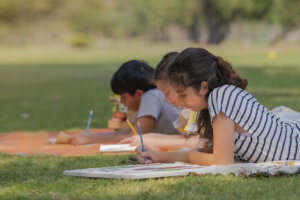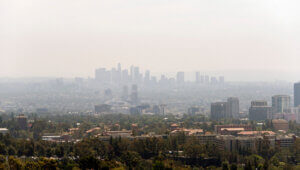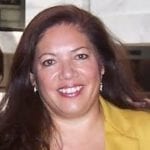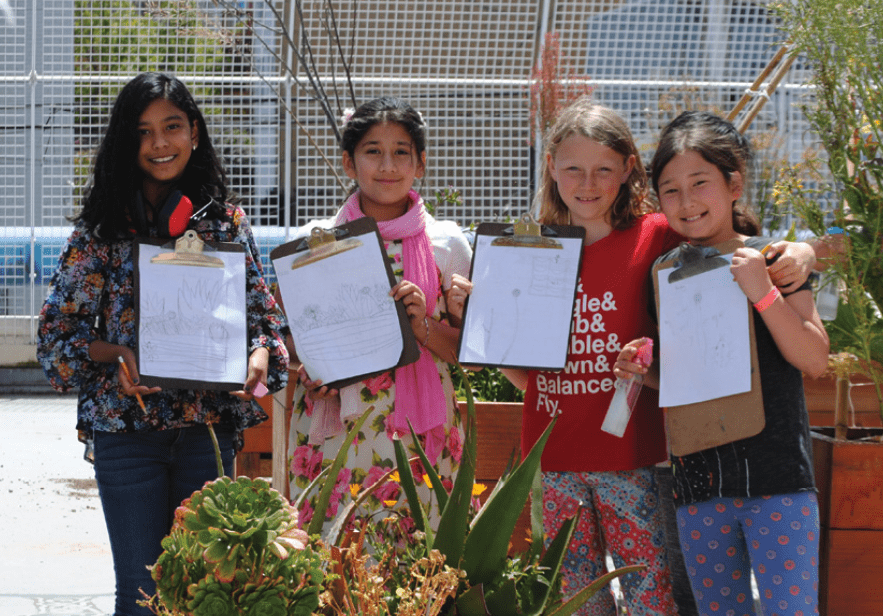Global education is inseparable from environmental literacy. When students learn about the histories and cultures of communities around the world, they develop a deeper sense of social- and self-awareness.
Teachers are on the frontlines of instilling these critical lessons, and Emily Schell—executive director of the California Global Education Project (CGEP)—has dedicated her career to supporting them. She works to provide professional learning experiences for K–12 educators to foster global competence in all students, and brings that expertise to CAELI as a co-chair of its leadership council.
In this Q&A, she shares how equity and justice practices inform her work, why there’s a need for professional development in this space, and what role environmental education plays in changing our world for the better.
What does your typical workday look like?
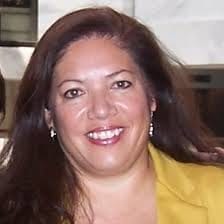
My typical day starts with reading the news. I used to be a news reporter and editor, so I’m used to checking different sources so I understand what’s happening in the world locally, nationally, globally. Then I spend most of my days in meetings and connecting with our partners. Global education is all about collaboration and working together, so I’ll meet with our friends at the Global Oneness Project, Generation Global at the Tony Blair Institute for Global Change, Empatico, Ten Strands, or CAELI to discuss the programs we’re running with them. And during the last six months, I’ve spent a lot of time in webinars to just keep up with everything else happening in the education world. Everyday is a new scenario in this pandemic. Are teachers going back to school? Are teachers going hybrid? Schools are open again, but the next day they’re closed. All of these things are in constant flux.
It seems like you make continued learning a priority. Is that a theme that comes up a lot in your work?
Absolutely. If we stuck with what we knew when we started this work, we’d be outdated. That would happen on a weekly basis. That’s the challenge to global education. We don’t have a state-adopted set of standards or a framework like they do in the other eight disciplines in the California Subject Matter Project (CSMP), of which CGEP is a part. Our work helps teachers see relevance in those disciplines when applied to contemporary issues, and our content is what’s happening in the world and how that has roots in other areas, like geography, culture, sciences, and more. Our work is growing on an hourly basis, alongside global events as they happen. We can’t just be reactive; we have to be thoughtful and responsive.
Why is there a need to support educators in teaching global competency?
I’ve been out of the classroom for a while, but I started as a teacher. I know it’s hard enough to be planning on a daily basis because your planning is in response to how students are learning and progressing. It’s a big mountain to climb. At the same time, teachers want to make lessons relevant. I once had a student from Syria who couldn’t concentrate at all because of what was going on with the Syrian crisis. We need to know about and be empathetic to those issues. Teachers can’t tackle all of these things at once, but there’s the intent. So we are here to support those teachers who want the best for their students.

Dr. Emily Schell (second to left) and her colleagues at the California Global Education Project.
You seem to have a strong passion that drives your work. Can you speak more to that passion?
I’m passionate about this work because I hold teachers in such high regard. I see how hard they work throughout their lifetimes and careers, and they need to be supported. We can’t tell our students to be lifelong learners and not be lifelong learners ourselves as educators. That’s what we’re here to help teachers do. I love getting to support these teachers, listen to them, and help them translate with their students what it means to be an equitable society, to value every human life, what social justice is—even though the students may not have the terminology in first grade or second grade for that.
What’s the connection between global education and environmental literacy?
When we look at global education being an umbrella, I’d like to say that the environment sits under that umbrella. But I’ve started to think it’s actually the lining for the umbrella. We have a global competence framework that we use, which basically defines global education as students developing the knowledge and skills to understand and act on issues of global significance. So global education guides students through investigating their local and global world, looking at multiple perspectives, and communicating while learning, but then it encourages them to take action. What are you going to do about this? It means paying attention to your role as a consumer and producer, how you view and conserve natural resources, how you use your agency to address environmental justice.
How do social justice, equity, and environmental justice shape your work?
Equity has always been a part of our mission with the CSMP, which has been in existence since 1988. Our work in global education and the environment has always had this overlay of social justice, and it all comes together under the concept of environmental justice. This goes back to the United Nations’ Sustainable Development Goals, which are goals for reduced inequalities, gender equity, intersectionality, and more in addition to climate action, access to clean water and sanitation, and affordable energy. They’re all connected, so these issues of equity and environmental justice are just great placeholders for how we address a multitude of issues in global education.
Watch this video Emily recently produced with funding from the Stuart Foundation to learn more about CAELI’s partnership with the California Subject Matter Project (CSMP).
Do you have any examples of how this equity-centered approach has made a deep impact?
Of the 22 global competence indicators that we have, the one that resonates most is the indicator to empathize with others. If you can empathize with others and practice compassionate care, we have a better chance of achieving equity. And teachers came up with some interesting results when they introduce empathy to their students. This started with kindergarten teachers saying, “My five-year-olds can empathize with these endangered species. They have empathy for the dugong in the Philippines.” We were originally intending to teach human-centered empathy, but you can actually extend empathy to animals and the environment. Kids are pushing those borders by looking at trees, forests, oceans, fish, and whales with such loving care and compassion. So we’ve expanded this idea of empathy as the heart of how we get to develop equity, environmental justice, and global education. There is a strong connection between knowing and caring.
What successes and challenges have you faced when supporting teachers to integrate environmental literacy?
Some of the challenges have been getting teachers to integrate environmental lessons into their core curriculum, for example math, history, and science. But we’ve seen plenty of success. A lot of these success stories have to do with teachers recognizing that this work doesn’t just rest with them and their lesson plan or their textbook. There is a cross-disciplinary nature to environmental literacy. Teachers and students can identify problems, ask questions, and raise awareness within their own disciplinary and geographic context. Students are learning through a variety of skills and concepts how to understand and act on issues related to their environments. We’ve seen students go all the way to city council to get something done about the problems they see in their schools and communities, whether it’s food waste, storm drain runoff, or something else.
Where do you think the field of environmental literacy is heading?
The field is moving beyond a static concept of literacy toward a competency-based model. It’s not just knowledge about the environment anymore; it’s also analysis and evaluation of that knowledge, and then encouraging a response to it. There’s so much happening right now that demands a response, and we have to respond through our education system and the work we do. California’s on fire. Oregon’s on fire. We’ve got hurricanes, and storms, and flooding. The problems are just getting bigger and more devastating, so the field is only growing. I see environmental education as something that has to be front and center, has to be addressed across the system, across the grade levels, across the disciplines. We all have to work together to address these very real issues of climate change and environmental justice, and to live together on this planet, we have to appeal to a more empathic core of humanity.




